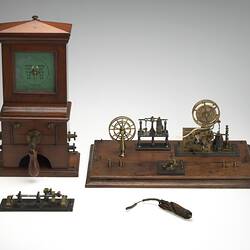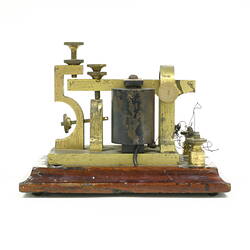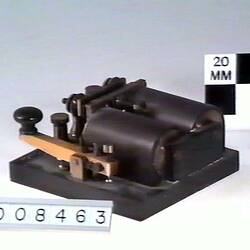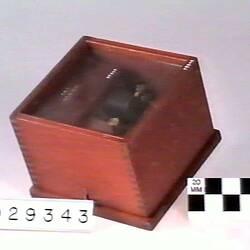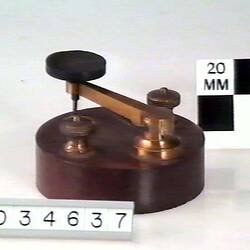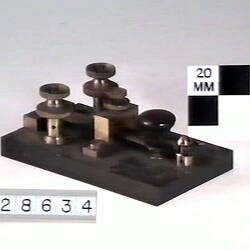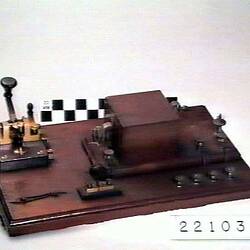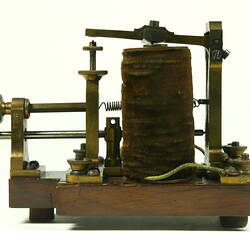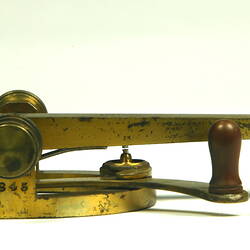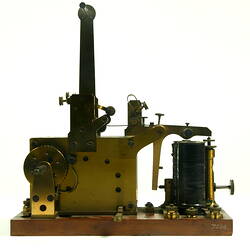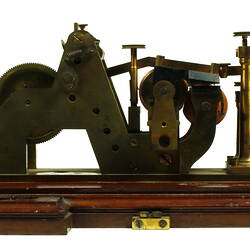1854 marked the foundation of the telegraph network in Victoria and in Australia. The telegraph network made possible the widespread and immediate distribution of information - something that is taken for granted today - but at that time was revolutionary. Before the telegraph, the shortest time for sending the vast majority of information over long distances was governed by the greatest speed of a human, an animal, a bird, a ship, or more recently, a railway locomotive.
The introduction of the telegraph marked the start of a system which became widely used for both business and private purposes. The telegraph rapidly became essential for government and commercial activities, for railway operations, for navigational, meteorological, astronomical and scientific purposes, for the standardization of time throughout Victoria and Australia, for news distribution, and for the exchange of personal messages by the general population. The rapid acceptance of the new technology in some ways parallels the mobile phone revolution at the end of the 20th century. With such widespread and frequent use, people became so familiar with the telegraph that it rapidly became part of the normal fabric of society.
In the years prior to 1854, there had been pressure from business interests to improve communication between Melbourne and Port Phillip Heads, primarily for the passage of shipping information and of news from Europe, as the Victorian coast was often the first landfall for ships sailing across the southern ocean. Just as a decision was made to investigate the possibilities of the electric telegraph, a young Irish-Canadian engineer named Samuel Walker McGowan landed in Melbourne in 1853.
McGowan had studied and worked in the USA with Samuel Morse, the inventor of the Morse electric telegraph. He had also worked with several Canadian and United States telegraph companies, but in 1852, encouraged by Morse, he decided to head for Australia to try to establish the telegraph there. He brought with him an experienced telegraphist and a quantity of telegraph equipment.
He arrived at an opportune time. Hugh Childers, the Collector of Customs, was one of several influential individuals in Victoria who had been pressing for the introduction of the electric telegraph. Childers arranged for McGowan to demonstrate his telegraph equipment in Melbourne, resulting in enthusiastic support from the Melbourne Argus newspaper.
McGowan won the contract to erect 'a line of electric telegraph between Melbourne and Williamstown' and the first electric telegraph line in Victoria (and the first in Australia) opened for business in March, 1854. It had been decided that the telegraph service would be run by the Victorian Government. McGowan was offered and accepted the position of Superintendent of the Electric Telegraph in Victoria in March 1854.
The telegraph connection between Melbourne and Williamstown was the first link in a network of information distribution that spread across Victoria and then linked to other Australian colonies and ultimately to the world. This network was the forerunner of the internet, and like the internet, had a major impact on the society of the time.
By December 1854, the telegraph line to Geelong was completed. The first message sent to Melbourne gave news of the Eureka Stockade. In January 1855, the early availability in Melbourne of shipping information and European news was further enhanced by the completion of the line to Queenscliff. A branch line from Melbourne to Sandridge was established on 1 July 1855. Lines between Geelong and Ballarat, and between Melbourne and Sandhurst, were completed on 14 and 20 December 1856 respectively.
In July 1858, the telegraph line between Melbourne and Adelaide opened, followed in October 1858 by the Melbourne-Sydney line. European news arriving via ships calling at Adelaide could now reach Melbourne several days earlier than previously, and was transmitted onwards to Sydney. In 1857 and 1858 surveys were conducted in Bass Strait to determine the best route for a submarine telegraph cable between Victoria and Tasmania. McGowan participated in theses surveys, at one stage almost losing his life in the capsize of a small boat during an island landing. In August 1859, the first cable was laid, between Cape Otway and Low Head, near Launceston. Melbourne and Hobart were linked, completing the network uniting the capital cities of the four south-eastern Australian colonies. For a short time at least, the Bass Strait cable was the longest undersea telegraph cable in the world, although it was operational only until 1861. It was finally replaced in 1869.
In 1861 the telegraph line between Sydney and Brisbane was opened, and Adelaide and Sydney were directly linked in 1867.
In 1877 Perth and Adelaide were linked via the East-West Telegraph Line around the Great Australian Bight thus completing the link between the five Australian colonies.
More Information
-
Keywords
-
Authors
-
Article types

